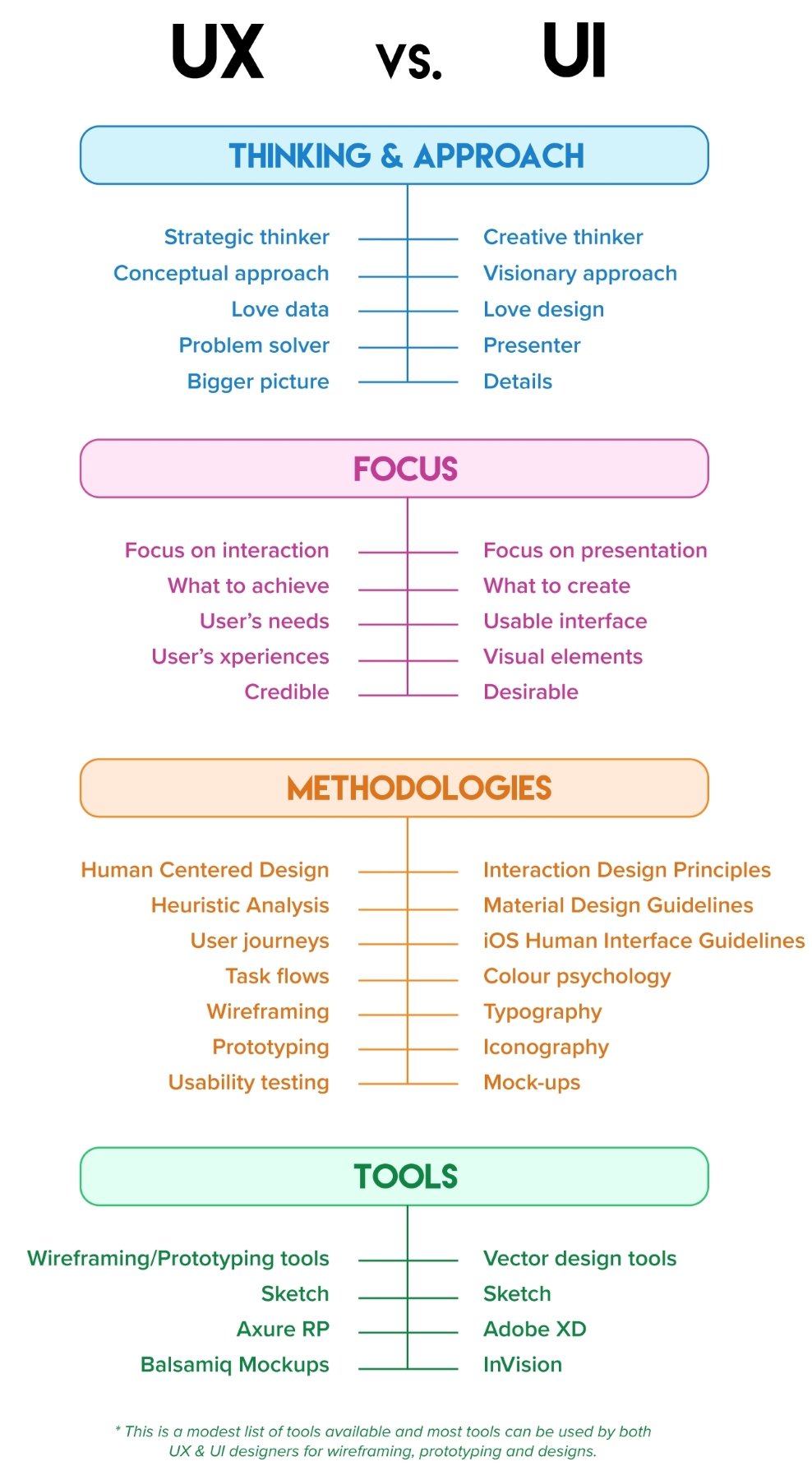The UX field of study is exponentially growing at such a rapid rate, and with this expansion comes a variety of different specialties that branch out of UX and into other design disciplines. Even though some of these disciplines seem similar (especially because most of them have the word Design in the title), they have distinctive focal points that differentiate one from the other and contribute to the bigger picture of HCD.
- UCD: Also called UDD, it is the design philosophy that provides the guidelines within a software development cycle to always focus on the user's wants, needs, and limitations to create the best possible end product for the user.
- Iterative design: It follows these UCD guidelines within a development cycle of a digital product that includes research, concept, design, develop, and test. After each cycle, iterations are made based on feedback results, thus improving the final product.
- Product design: It is the practice of creating an innovative new product for the user.
- Interaction design (IxD): It looks at the way users interact with the product through different types of interaction, such as multitouch and gesture-based interfaces.
- UX research: It is also called user research or design research, and is the specialty of researching and analyzing the user's needs, behaviors, and motivations to interact with a product.
- UX design: It focuses on creating an overall satisfactory experience for the user when interacting with a product by improving the usability and accessibility.
- UI design: It ensures that all the touch points of the digital product are not just visually appealing but also support the user journeys and end goals of the user.
- Visual design: It is the practice of using color, typography, illustrations, and photography to communicate a message.
- Industrial design: It is the practice of designing concepts for manufactured products.
- Service design: It is the practice of aligning a company’s infrastructure, employees, and services in such a way as to improve the quality of interaction between the company and the user.
From the list of UX and design disciplines here, it's clear that each specialty plays a significant role in the user's experience and interaction with any product (not just a digital product, such as a website or a mobile app). The two fields of study that are interlinked and sometimes mistakenly seen as the same discipline are UX and UI. In the next section, we'll discuss these two roles and the unique roles they play in the user's experience with a digital product.
The misconception that UX and UI are the same disciplines creates some frustration with UX and UI designers, who are expected to perform tasks they're not always specialized in nor passionate about. Of course, there's always the exception of those who enjoy both UX and UI design and can effortlessly shift between the two. Both UX and UI designers focus on usability and improving the user experience, one more analytical and the other more visual. Here is a more detailed breakdown of each and how they complement each other:
- UX designers are strategic thinkers who have a conceptual approach to solving problems. They enjoy the challenge of diving into data and taking it apart by analyzing every possible element. UX designers understand the importance of every piece of information, even if it seems insignificant to others, it may have an impact on the bigger picture. No stone is left unturned during the research phase. They know that the UX strategy is just as strong as the data and research done. While UX designers are digging in the dirt, UI designers usually prefer not to get mud on their shoes. They usually wait for the UX designers to finish the digging and give guidance on how to convert the findings into an aesthetically pleasing and user-friendly website.
- UI designers are creative thinkers. They're skilled artisans with a visionary approach to taking data and using interaction design principles to create a website that's not just aesthetically pleasing but user-friendly as well. While a UI designer's focus is mainly on functional presentation of a website by crafting a smooth user interface, a UX designer's focus is on the interaction of the user with the website.

This preceding visual comparison is only an example to explain the main (not limited to) differences between the two specialties. There are many designers who enjoy both UX and UI design and can execute the tasks from both fields successfully. Also, keep in mind that the tools of the trade change often and the tools you use are purely personal preference or project-specific.
The list provided is merely a guideline of established applications and it's advised to try all the tools available. This will not just improve your overall skill set but give you a broader understanding of executing UX tasks within different environments.



